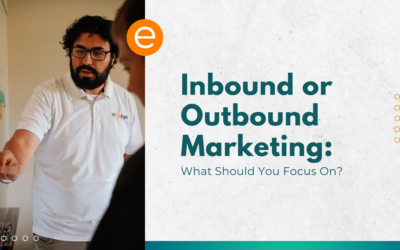Stop Guessing. Start Knowing: How to Track Where Your Customers Are Coming From
You’re investing in marketing—radio ads, Google Ads, maybe print campaigns. The phone rings, forms get filled out, but you’re left wondering:
- Did that radio spot actually work?
- Are my Google Ads worth it?
- Or did someone just stumble across my website another way?
I meet with business owners every week who are asking these same questions. Most of them are spending thousands of dollars each month but have little to no data to back up what’s working. Instead, they’re stuck with guesses, gut feelings, or anecdotal feedback.
The good news? You don’t need complicated software or a marketing degree to fix this. With a WordPress site, smarter forms, and a simple spreadsheet, you can finally track marketing leads with confidence.
Why most businesses struggle with lead tracking
When I sit down with business owners, the pain points are almost always the same:
- They spend on marketing but can’t connect spend to results.
- They ask customers “How did you hear about us?” and get vague answers.
- They don’t log data consistently, so they can’t compare results month over month.
- They underestimate the impact of referrals and offline marketing.
This leads to frustration and poor decisions. Budgets get cut where they shouldn’t, and campaigns that deserve more investment are overlooked.
Marketing doesn’t have to be a guessing game. It just needs a clear, repeatable system to help you track customers and understand exactly what’s working.
How to track marketing leads and ROI in 5 simple steps
Step 1: ask better questions on your forms
Most tracking issues start at the very first touchpoint: your forms. If you’re using WordPress (and I recommend Gravity Forms), you’re in a great position to improve this.
Instead of asking:
- “How did you hear about us?”
Try asking:
- “How did you find us?”
- “What made you reach out today?”
- “Were you referred by someone? If yes, who?”
These subtle shifts lead to more accurate, thoughtful answers. Instead of “online,” you might hear:
- “I Googled plumbers near me and saw your reviews.”
- “I heard your radio ad and finally decided to call.”
- “Mike from the Chamber recommended you.”
Those details are gold for understanding where your best leads really come from.
Step 2: capture digital source data automatically
If you’re running digital campaigns, you should know which ad, keyword, or platform delivered a lead. Relying only on customer memory is risky.
Here’s how to fix it:
- Use hidden fields in Gravity Forms to capture source, medium, campaign, and landing page.
- Add a plugin like Attributer.io to automatically populate those fields whenever someone arrives via a campaign link.
- Make sure your campaign URLs include UTM parameters (e.g., utm_source=google&utm_medium=cpc&utm_campaign=fall-sale).
This ensures that when someone fills out your form, you’ll know whether they came from Google Ads, a Facebook campaign, or organic search—without them ever having to remember.
Step 3: don’t forget referrals and offline sources
Digital marketing is easier to track, but traditional marketing and referrals still matter. In fact, many of the business owners I meet find referrals are their highest-quality marketing leads.
To track offline sources more effectively:
- Add a dedicated “Referral” field on your form.
- Train staff to ask callers, “How did you find us?” and log the response.
- Use promo codes or unique URLs in radio or print ads (e.g., yourwebsite.com/radio).
- Consider unique phone numbers for different campaigns.
These small steps close the gap between traditional and digital attribution.
Step 4: log everything in one central place
Even if your website and plugins capture some of this data, you need a single source of truth. For most businesses, a simple spreadsheet is enough. When you marketing leads in one place, you’ll start to see patterns you can act on with confidence.
Each row should represent one lead, with columns for:
- Date
- Name or ID
- Source (Google Ads, Radio, Referral, Organic Search, etc.)
- What they said on the form
- Campaign (if applicable)
- Cost for that source or campaign
- Outcome (consultation, sale, not qualified)
- Revenue (if closed)
- Notes
Over time, this log will reveal trends you can act on. Maybe 80% of your sales come from referrals. Maybe your $3,000 radio ad isn’t pulling in the ROI you hoped for. Or maybe a small Google Ads campaign is outperforming everything else.
Step 5: review and calculate ROI
Once you have consistent data, you can calculate Return on Investment (ROI):
ROI = (Revenue – Cost) ÷ Cost
Here’s why this matters:
- You’ll know exactly which campaigns are profitable.
- You’ll feel confident scaling marketing that works.
- You’ll stop wasting money on what doesn’t.
A monthly review is usually enough for most small businesses. For faster-moving campaigns like Google Ads, check bi-weekly.
Why tracking leads matters more than ever
Recent studies highlight just how important tracking is:
- Radio advertising still has massive reach, but measurement remains its weakness. In the U.S., radio reaches 84% of adults weekly, but most businesses struggle to prove ROI without tracking systems.
- Digital campaigns can be measured almost instantly. Yet, according to HubSpot, 40% of marketers say proving ROI is their biggest challenge.
- Businesses that use lead tracking consistently see 15–20% higher ROI because they can shift budgets toward high-performing campaigns.
These numbers prove that the businesses who track win. The ones who don’t? They keep guessing.
FAQs about tracking marketing leads and ROI
What if a customer doesn’t remember how they found us?
That’s normal. Better-phrased questions like “What made you reach out today?” often help jog their memory. You can also rely on hidden tracking fields for digital leads.
Do I need a CRM for this to work?
No. A spreadsheet works perfectly for most small businesses. As you grow, you may want to integrate a CRM, but the system stays the same.
Can Gravity Forms really handle this?
Yes. Gravity Forms is flexible enough to capture everything—from custom questions to hidden UTM parameters—without needing enterprise software.
How often should I review my data?
Start monthly. The key is consistency. Don’t just collect data—review it, calculate ROI, and act on the insights.
What’s a good ROI target?
It depends on your industry, but many businesses aim for 3× to 5× return (earning $3–$5 for every $1 spent). Anything under 1× is a red flag.
Next step: download the free tracking template
You don’t need to live in the gray area of marketing anymore. With the right form questions, smart tracking tools, and consistent logging, you’ll know exactly which marketing dollars are working hardest—and you’ll finally track customers in a way that brings real clarity.
I’ve created a free Lead Tracking Spreadsheet Template you can use right away. It’s simple, clear, and designed for business owners who want clarity without complexity.
Download the Lead Tracking Spreadsheet Template and start turning guesswork into confident decisions.










0 Comments